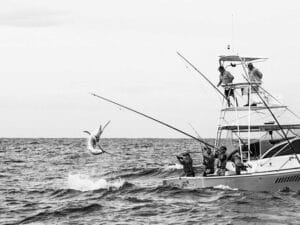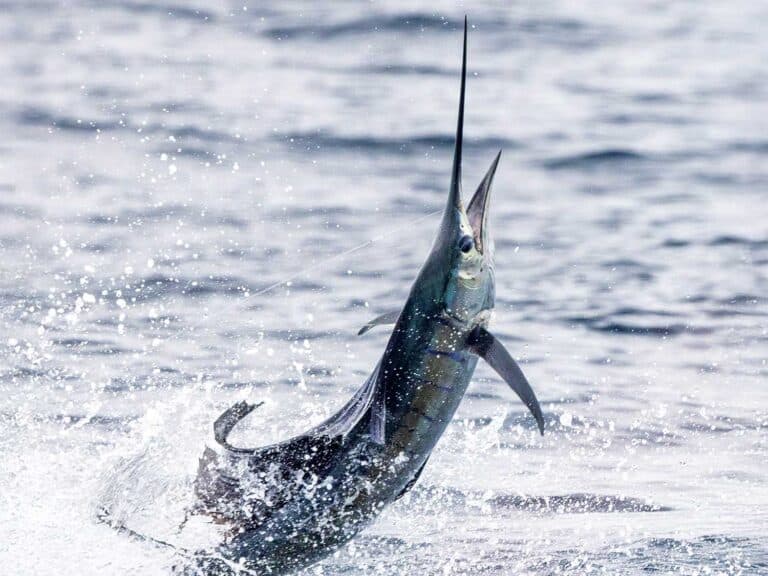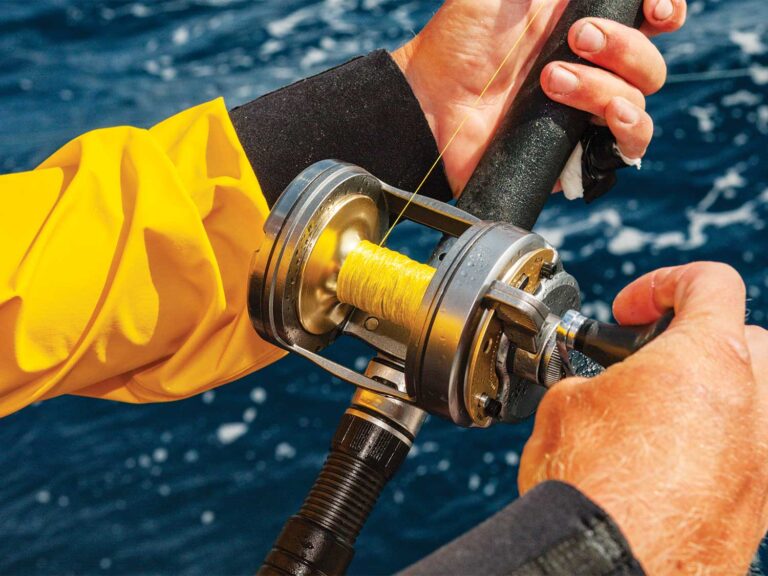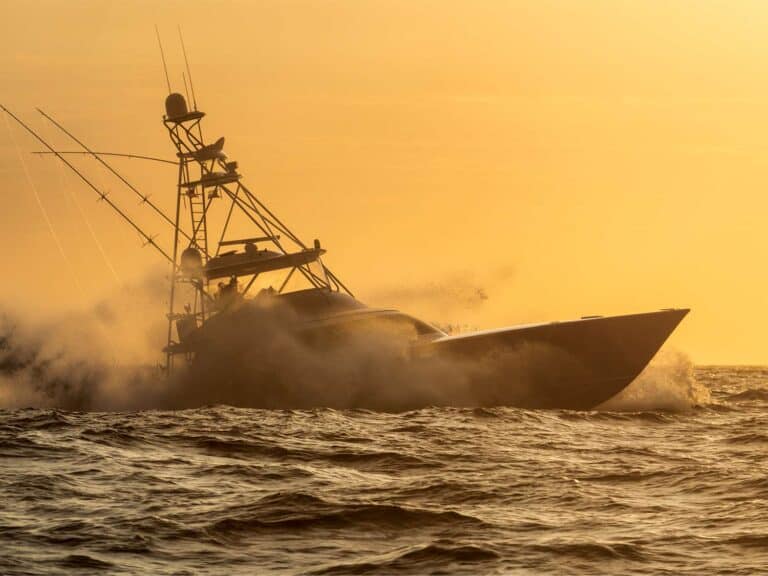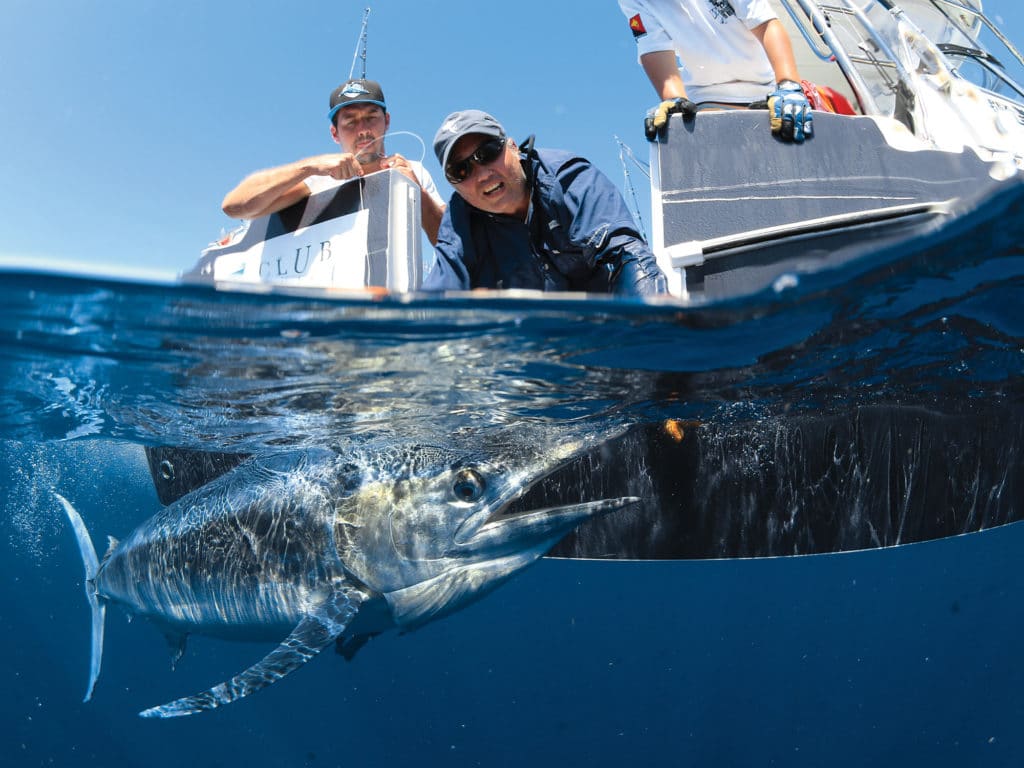
It’s no secret Australia is rich in fishing opportunities, especially for its prolific game fish. The giant black marlin off Cairns have always dominated the international limelight, and rightfully so: No other location in the world offers so many shots at granders. However, when it comes to sheer numbers and variety of billfish, it might surprise many anglers to hear that New South Wales is where they should be looking. Sure, it doesn’t offer 1,000-plus-pound monsters, but what it does have is good numbers of all six species of Indo-Pacific billfish. And when you step back and look at sport-fishing opportunities around the world, there are few places where you can catch all six species and score a coveted fantasy grand slam in just one state — and NSW is one of them.
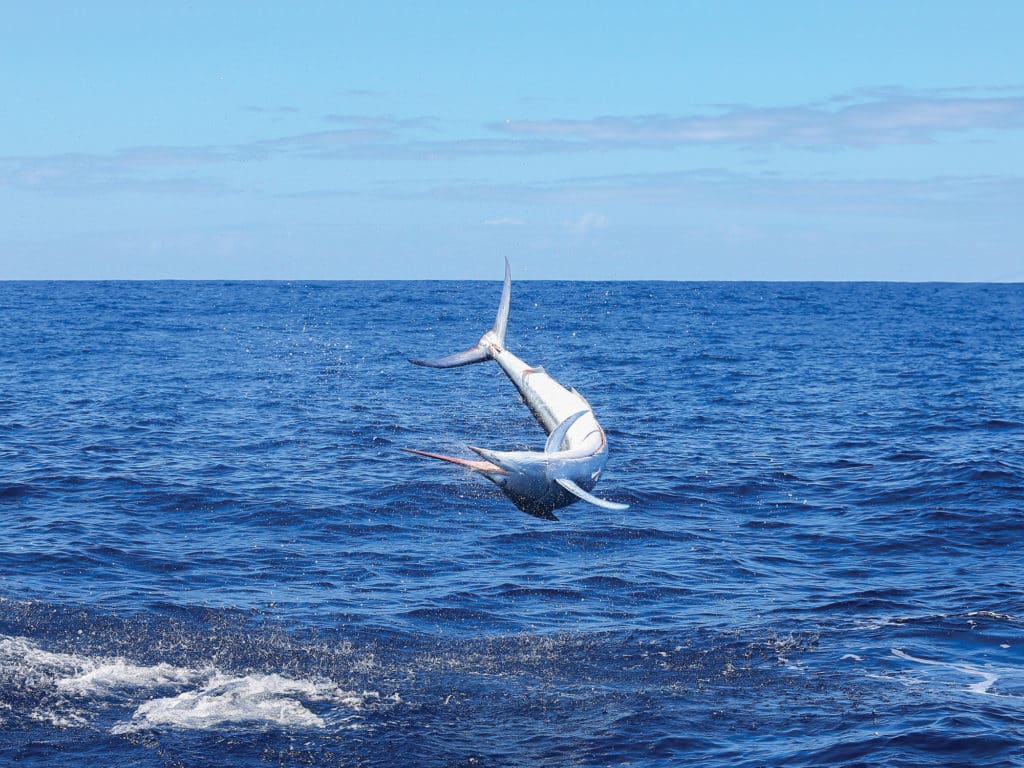
The Quarry
Blue, black and striped marlin, sailfish, spearfish and swordfish are all on the table. All three marlin species are prolific; anglers catch them right along the coast during much of the year, with the season peaking January to April. Stripes and blacks are the most common, and during the season, multiple fish are a daily occurrence.
Sailfish turn up during the same period. They’re largely restricted to the inshore waters on the North Coast, especially in places like South West Rocks, although there are exceptions — one was unbelievably caught off the rocks in Jervis Bay last season. Shortbill spearfish are much more elusive, favoring the wider grounds. Having said that, the catch rate has increased dramatically in the last couple of years to the point where they are almost a weekly encounter during the season, and it often happens right off Sydney.
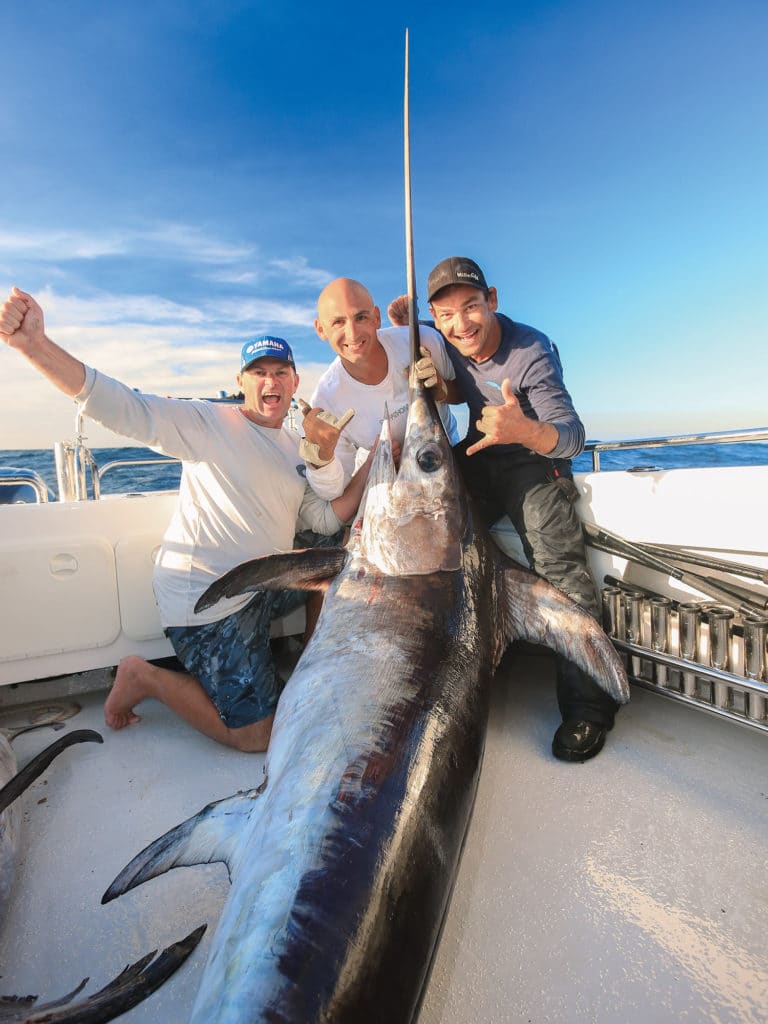
Swordfish too were once a rarity, but they’ve suddenly become surprisingly common. This is more easily explained due to the increased popularity of daytime deep-dropping — which is proving highly effective — as opposed to stock abundance. Incidentally, fisheries managers classify swordfish stocks as healthy along Australia’s East Coast, and they expect to see increased catches for anglers because of the heavily regulated commercial longlining industry. In essence, we are barely scratching the surface with this technique in NSW. Down south on the Victorian border, fishermen are catching swords up to 500 pounds, and most of the action is from April to June.
Fantasy Slam Central
Catching just three of the six species for a grand slam was once considered an angling achievement. However, with numbers of all species appearing to be on the rise, Aussie and international anglers alike are now setting their sights much higher on a billfish fantasy slam in NSW waters. Realistically, when you think about this feat, there are very few places in the world where this is achievable. Even better: You can catch all six species within a few hours of Sydney. In fact, I’ve managed to catch five of the six fishing right out of Sydney.
And while a lot of anglers around the world are only now realizing NSW’s potential, it has a strong sport-fishing history. American author and angler Zane Grey fished NSW back in the 1930s and came away with glowing reports of encounters with huge fish from Bermagui to Sydney. His photos of huge marlin were enough to spur the locals into action, and to this day, NSW has the largest contingent of anglers in Australia. What is interesting is that this fishery is dominated by trailerboats as opposed to larger sport-fishers. This makes the fishery unique. Having more people on the water isn’t a bad thing — it’s good because it’s easier to know exactly where the bite is. What’s better is that trailerboats are highly mobile, so they can move around and follow the bite far more effectively than their larger counterparts.
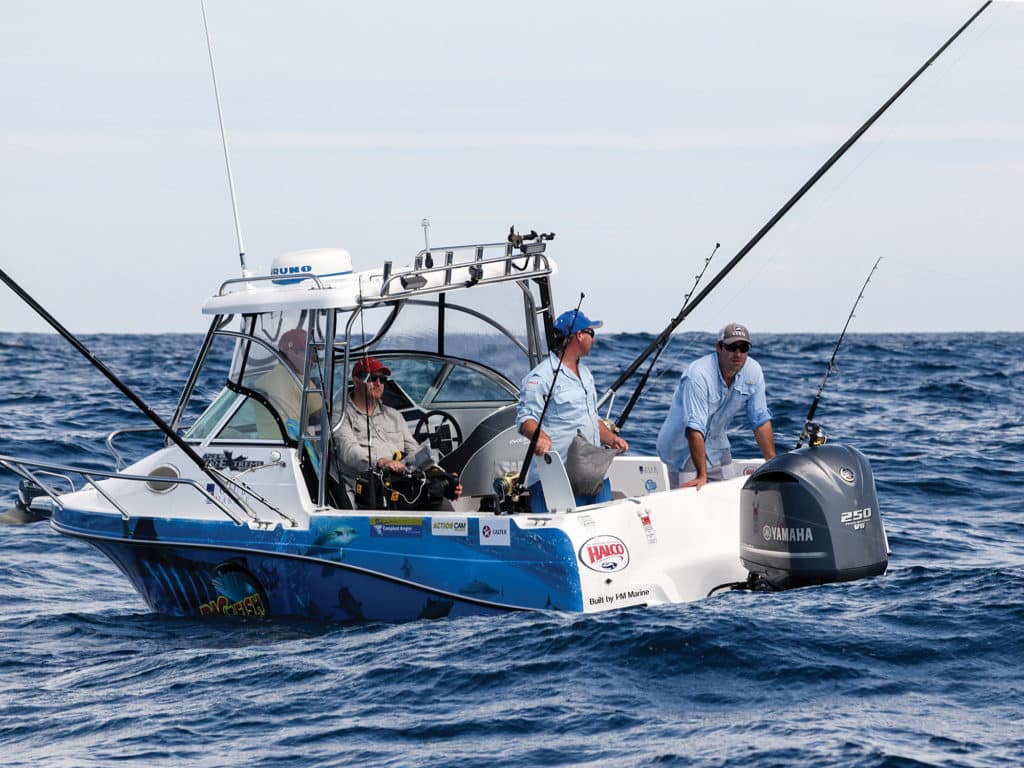
It’s All About the Current
A mix of the right elements is what makes NSW so productive. The continental shelf runs parallel to the coast and sits 12 to 20 miles offshore, which means the run to the fishing grounds is relatively short. Throw in a healthy mix of deepwater canyons and reefs, and you have the right terrain. However, the number one reason why NSW is so productive is the current created by the trade winds in the tropics, called the East Australian Current. The EAC pushes a warm tongue of hot water down the coast, which collides with the cooler, nutrient-rich waters of the Southern Ocean to form a fertile feeding zone known as the Tasman Front. This zone is teeming with life and attracts pelagic predators, especially billfish, sharks and tuna. Find the Tasman Front offshore and you will find the action. From January to April, when the current is strongest, the front edge pushes down the South Coast past Sydney. This is where the striped marlin stack up in huge numbers, and it also happens to be one of the few places where they regularly ball baitfish on the surface. They are attracted by acres of bait holding along the 80-fathom curve, so the most reliable technique for these striped marlin is slow-trolling live baits — referred to locally as liveys. When the fish are firing, anglers can expect a dozen shots a day on fish up to 300 pounds.
A few black marlin are usually mixed in as well, especially when the water is over 73 degrees. I’ve come to find much greater numbers of fish north of Sydney, but the fish are generally much bigger when the bite is south. On more than a few occasions, I have enjoyed a doubleheader with a stripey and a black marlin simultaneously. If you don’t get a black on bait, you have a second option. Every season, an annual migration of immature black marlin travels down the East Coast from Queensland into NSW. Ranging from a mere 50 pounds to more than 150 pounds, the fish ride the current south in close to the coast. At times, these fish travel so close to shore that anglers actually catch them from the shore. When the blacks stack up in these areas, you can get dozens of bites a day — it really can be easy to tick this species off the list. During this past season, the small blacks turned up off Sydney, and we even caught them right at the entrance to the harbor.
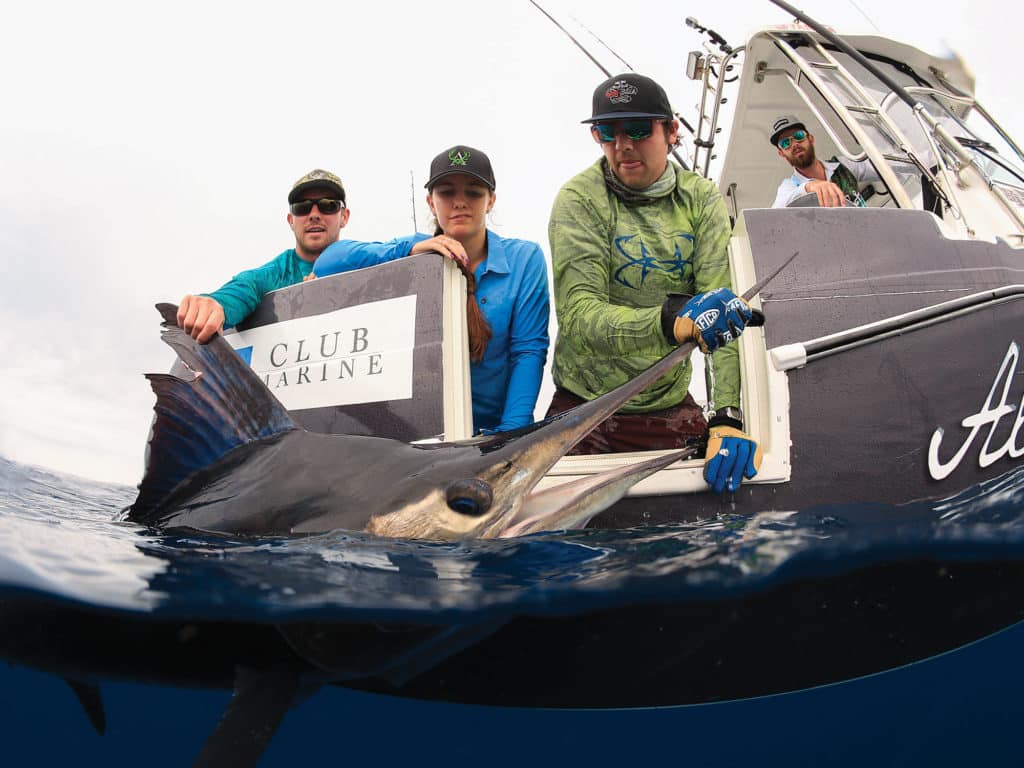
The Rarer Species
Blue marlin usually arrive as the striped marlin action slows down. March and April are the best times to catch them, and a late flush of hot water is usually the key. This year, it worked beautifully, with a huge run of midrange blues turning up right off Sydney. The blues prefer the waters beyond the shelf, so trolling lures is the standard approach. Just like all blue marlin, they can be a bit hit or miss, but you should expect a bite or two each day when the water is hot and blue.
Spearfish are typically a bycatch species when trolling for blue marlin. Once rare as hen’s teeth, they are now a surprisingly common catch. Even the longliners are reporting more interactions with them, and no one can explain it — but no one is complaining either. Trolling lures out wide during March and April is the best bet. I remember catching my first one a season ago in May when the water was dirty and green. We also caught a huge 78-pound one 10 miles off Sydney.
A tropical intruder, sailfish push down into the northern part of the state, where they can stack up in surprising numbers when the bait is thick. My favorite place to catch them is South West Rocks — some four hours north of Sydney — where the bay loads up with bait. The best part is that you can catch them so close to shore that people enjoying a coffee at the lookout can watch the hot fishing action.
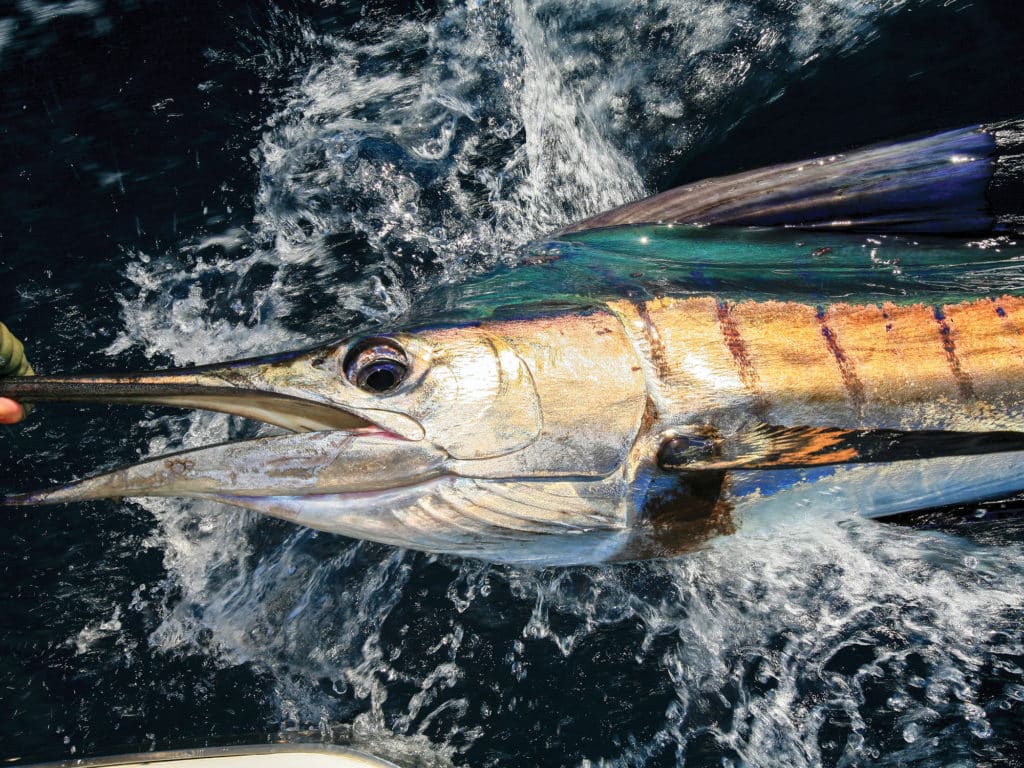
Defeating the Nemesis
The last species on my fantasy-slam list was swordfish. Despite putting in those long, cold nights, I was never on the rod during the times we actually did catch a few. To be completely honest, I got sick of night fishing, so I started deep-dropping during the day — to no effect. Swordfish have long been a personal nemesis, and I have hooked a number of them on several occasions, but something went wrong every time. One of the most memorable fish was a big fish that I hooked off Bermagui. The fish ate a live bait right at sunset at the back of the boat. As soon as it was hooked, the fish jumped and smashed into the outrigger — an hour later, the hooks pulled!
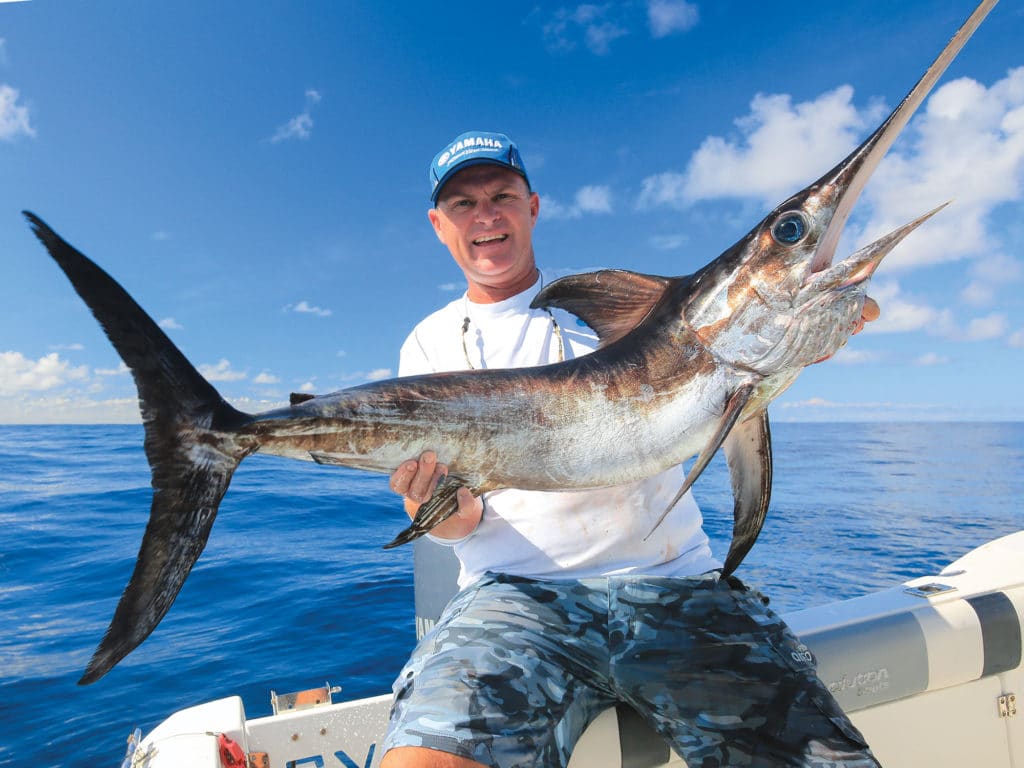
The problem was that I was following the longliners and fishing out wide. I soon changed my tactics after my old friend, Ritchie Abela, started racking up a few swords in 600 meters of water down south. On my very first drop, while fishing with my mad-keen son Coops, our first bait was eaten. Coops saw the bite first and said, “It’s a swordie bite, Dad.” I have to admit, I initially dismissed his comment — until the swordfish appeared. I was speechless. It wasn’t a big sword, barely topping 55 pounds, but the catch accomplished the holy grail of fishing. Initially, I didn’t realize I had just snagged a fantasy slam, and to do it right off Sydney made it that much more impressive. In doing so, I became one of the few anglers in all Australia, and the only one ever in NSW, to achieve such a feat.
I might be the first one, but with the fishing improving and anglers honing their tactics, chances are that I certainly won’t be the last. Best of all, the upcoming fishing season is shaping up to be a cracker.
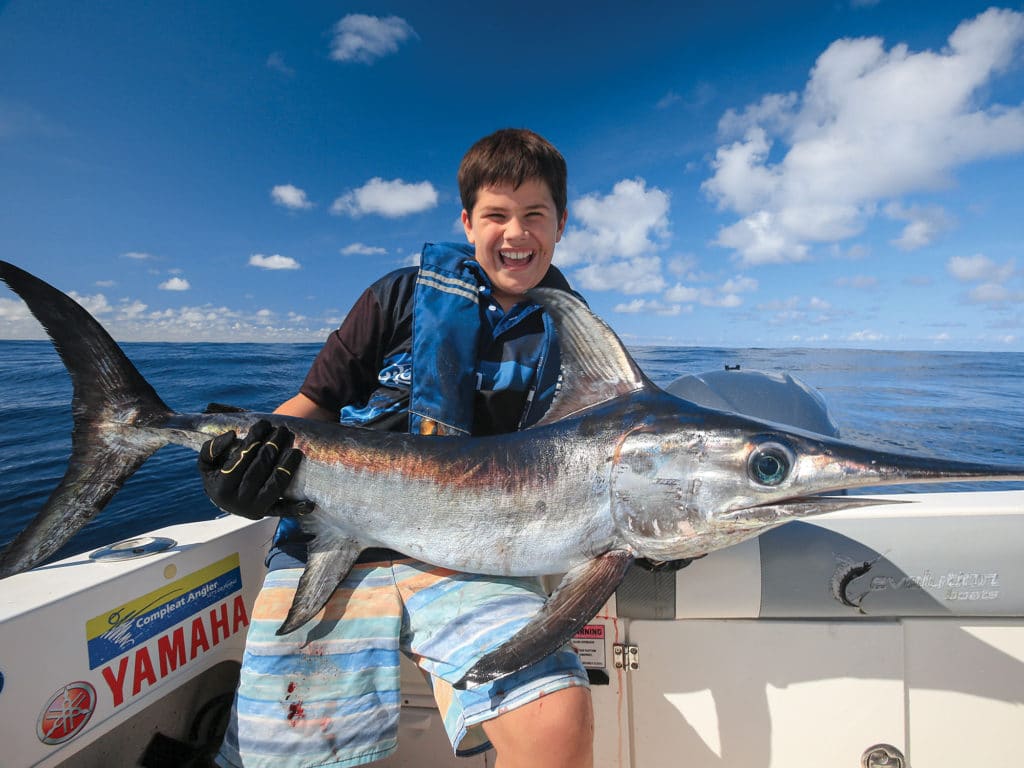
Grand Slam at Nine
Cooper McGlashan started his billfishing career on January 1, 2016, with a trip to Port Stephens just a couple hours north of Sydney. It was the tail end of an amazing bite, and the Strikezone crew quickly racked up a couple of striped marlin before Coops’ turn on the rod. He didn’t have to wait long. The line snapped out of the outrigger, and Coops was on the rod before anyone had a chance — he even set the circle hook without any help. Seconds later, 100 pounds of black marlin exploded out of the water. After a 20-minute fight, Coops had his first marlin boat-side, and we quickly set it free. As Coops watched that fish swim away, it triggered a passion.
Suddenly, there was no stopping him, and he was constantly nagging me to go marlin fishing every single day. Barely a week later, Strikezone was on the water again, only this time it was off Kiama, just an hour down the coast south of Sydney. Straight up, the crew scored a pair of striped marlin, and Coops got his hands on one of the rods somehow. Catching a doubleheader is hard enough at the best of times, but when you have a 9-year-old in the mix, it gets all that much harder — especially on a spin outfit. Despite the heavy drag on the Shimano Stella, Coops got his fish up first and added a solid stripey to his list of species. Coops continued to tally up more and more striped and black marlin over the next few weeks of fishing.
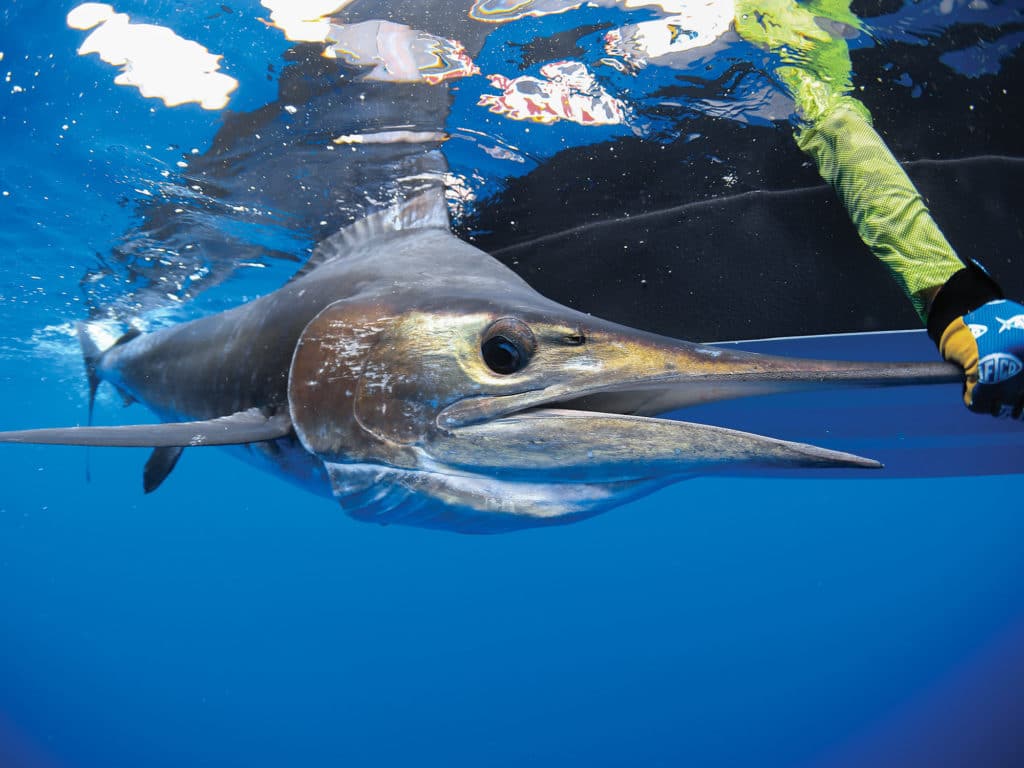
With two species under his belt, Coops suddenly had an insatiable appetite for a blue marlin. The problem is that NSW blue marlin average 300 to 400 pounds and are much tougher to land than stripeys and small blacks. To make things an even larger challenge, the blues tend to hold farther offshore. This means they’re much harder to find and more enigmatic in nature.
As luck would have it, a late-season flush of hot water pushed down the coast and brought with it Sydney’s best-ever run of blue marlin. The unseasonably hot water led to an unprecedented run of smaller blues in the 175- to 275-pound range, which is a slightly easier class of fish to tackle — especially for a 9-year-old. It seems Coops’ run of good luck just kept continuing.
With some calm weather in the forecast, Coops somehow persuaded his mother to give him a day off from school so he could have a crack at a blue. The fishing was hot straight from the beginning, and the crew was unlucky, pulling the hooks on the first two before it was Coops’ turn. He might have been delegated last on strike, but it took less than 20 minutes to hook up. After an hourlong fight, he released his blue marlin successfully and sealed his grand slam — giving him the title as Australia’s youngest to ever accomplish the fishing milestone.
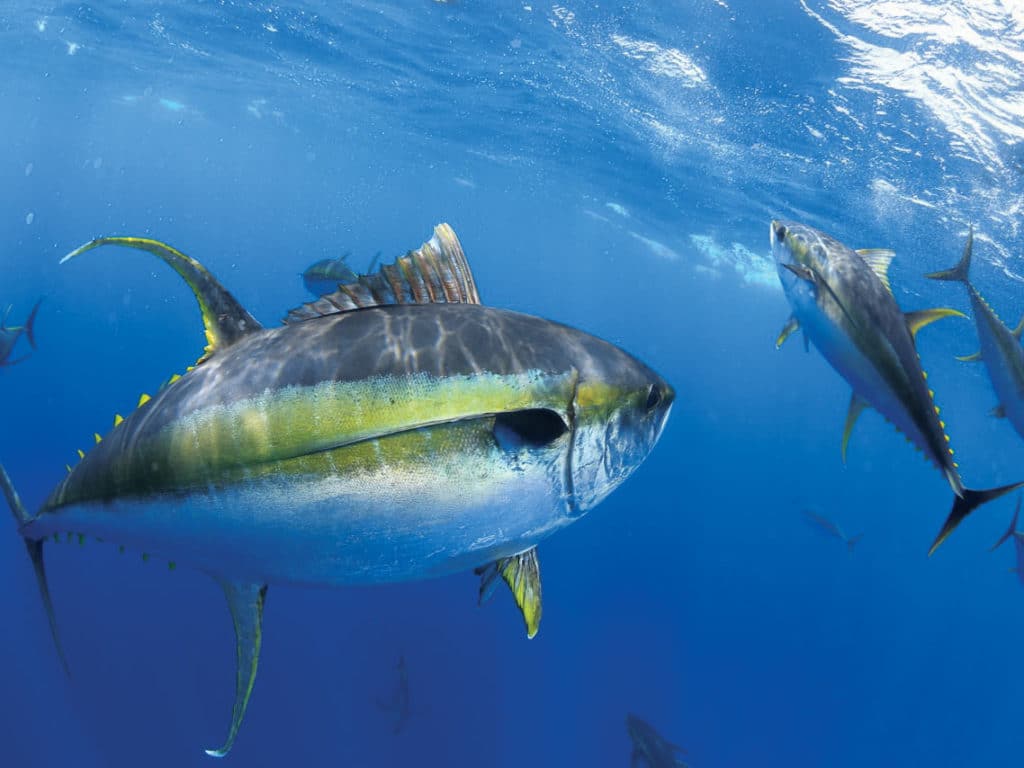
About the Author
Al McGlashan is one of Australia’s best-known fishing photographers and conservationists. McGlashan is the host of the TV series Fish’n with Mates, and he spends more time on and in the water than he does on land doing what he loves — fishing and filming.
